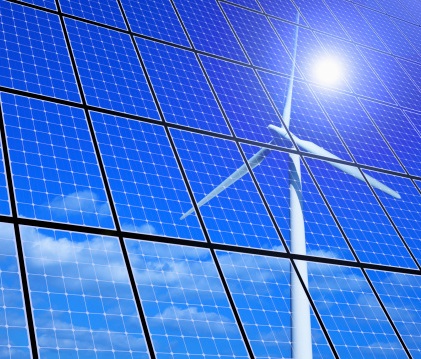 Seeing as integrating the growing share of renewable energy (RE) into the power grid is becoming a key challenge, one of the most efficient ways around this situation is to establish well managed interconnections that allow surplus RE power to be transferred to other countries, according to analysis from Frost & Sullivan.
Seeing as integrating the growing share of renewable energy (RE) into the power grid is becoming a key challenge, one of the most efficient ways around this situation is to establish well managed interconnections that allow surplus RE power to be transferred to other countries, according to analysis from Frost & Sullivan.
Besides interconnections, advanced pumped hydro and flexible gas plants will be commonly used mechanisms to manage renewable energy (RE) into the power grid until battery technology becomes a viable model, says the report, entitled ‘Global Perspective on the Integration of Renewable Energy into the Grid.’
For example, Denmark, when it recently experienced a booming 140% over-generation, has had success in dealing with RE through existing transmission interconnections with Germany, Norway and Sweden, the report says.
As European countries like Denmark, Germany and Spain are the frontrunners in integrating RE into the grid, best practices adopted in these nations could act as a strong reference point for developing countries in the Asia-Pacific region, according to Frost & Sullivan.
‘Ancillary and intra-day markets are also considered to be effective strategies to provide additional power on short notice and manage imbalances that occur due to the variability of RE power,’ says Adwaith Visveswaran, energy and power systems senior research analyst at Frost & Sullivan. ‘In Germany, these intra-day power markets have been modified to provide greater flexibility for RE.’
In the U.S. and Europe, two-way power generation is pushing utilities to devise a prosumer model – either by becoming enablers or investing in distributed power projects. In other regions, too, utilities will continue to play a dominant role as power generation will remain a centrally planned activity, according to the report.
‘Collectively, utilities are spending $25 billion a year to modernize and expand their infrastructure,’ continues Adwaith. ‘Some utilities in the U.S. are also investing in distributed wind and solar power, while European utilities are restructuring their business model to move away from large-scale thermal production.’
However, excess investment in fossil fuel and nuclear power, ongoing subsidies for these sources, and declining natural gas prices have been operational challenges for utilities globally, the report notes. With the increasing share of renewables likely to lead to a significant fall in electricity prices, financial challenges will also begin to burden utilities.
Furthermore, says Frost & Sullivan, as markets tend to dictate key RE policy initiatives globally, European countries are experiencing a slackening in feed-in tariff (FIT) schemes in contrast to an increase in Asian countries.
For instance, Japan has raised its FIT rates for offshore wind by 63%, and Thailand has deployed a three-tier FIT rate system for residential and commercial solar photovoltaic installations.
More on Frost & Sullivan's report can be found here.



